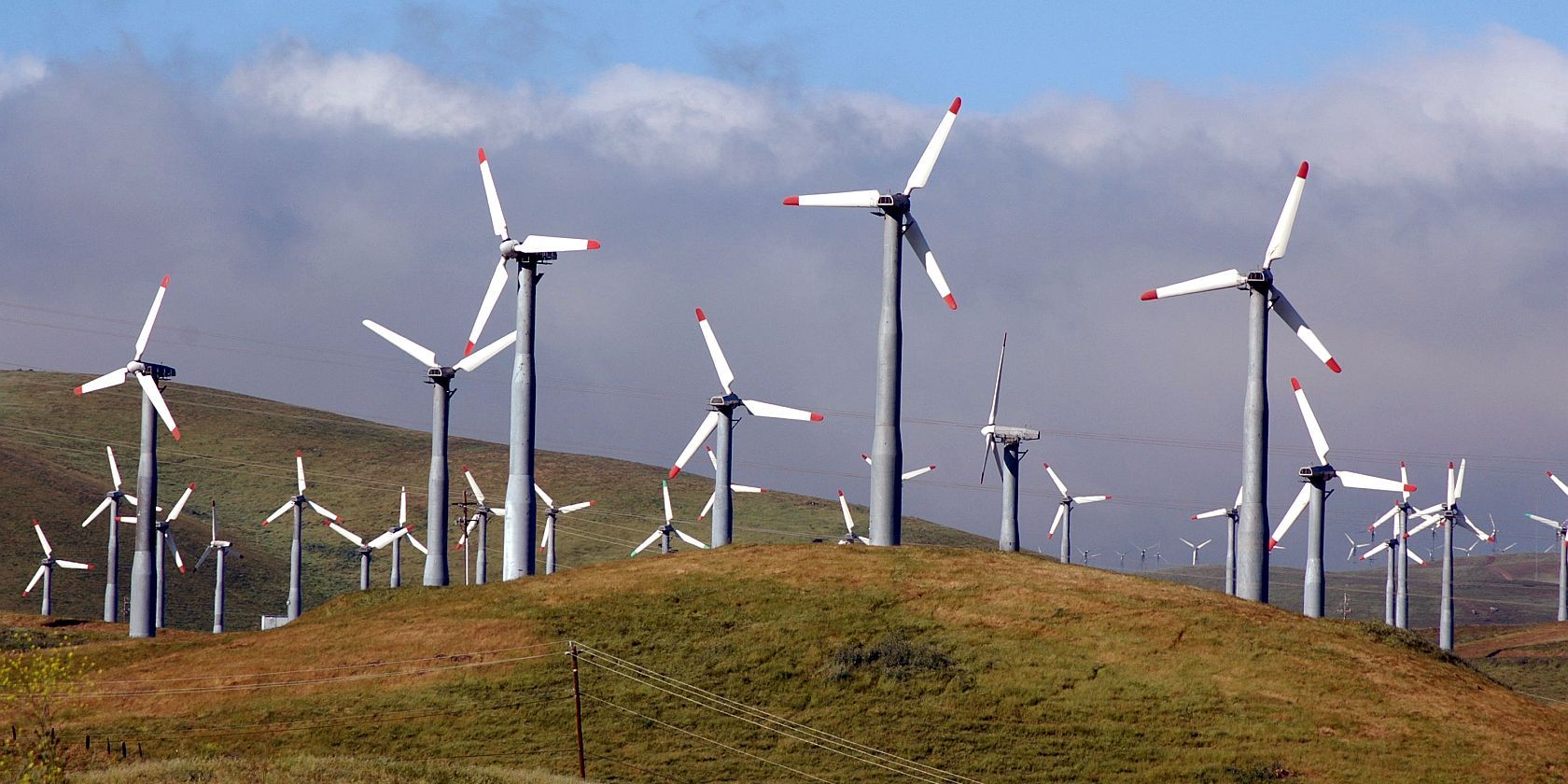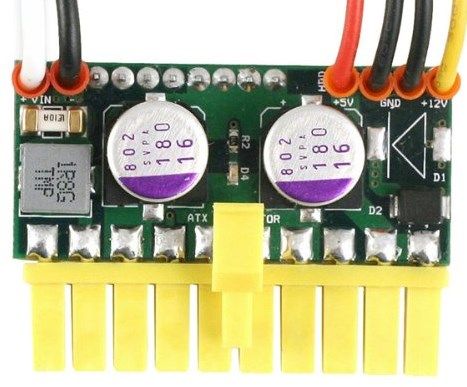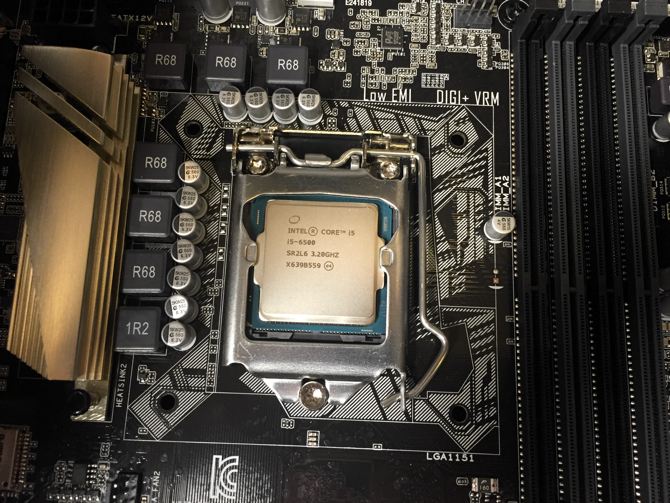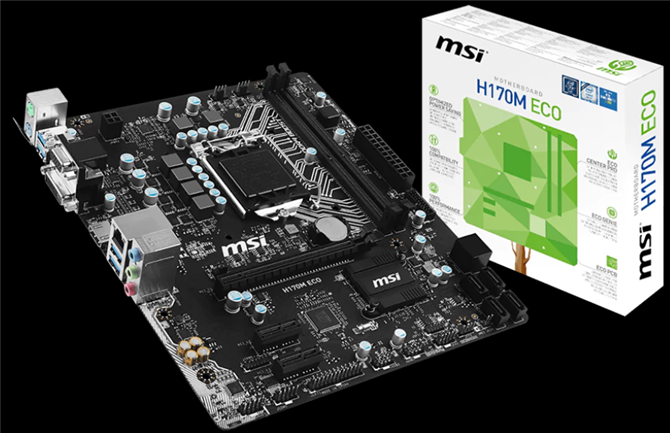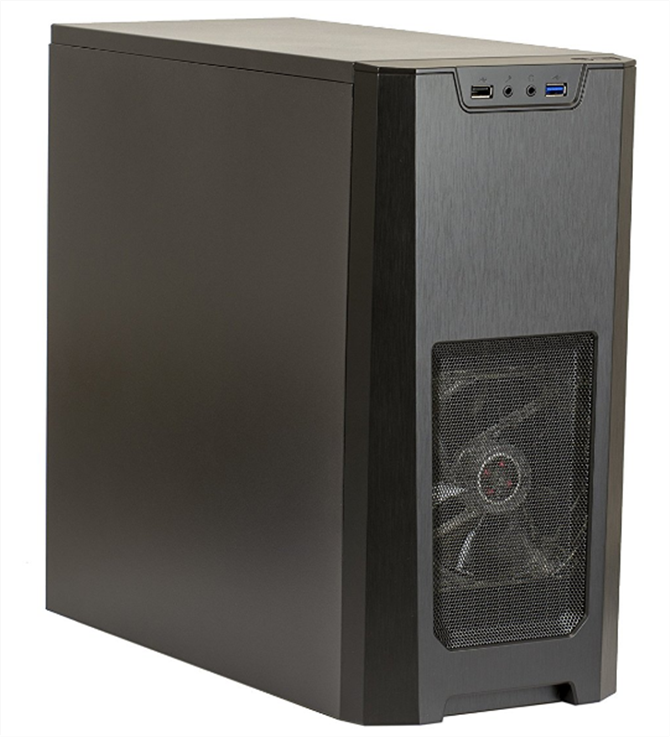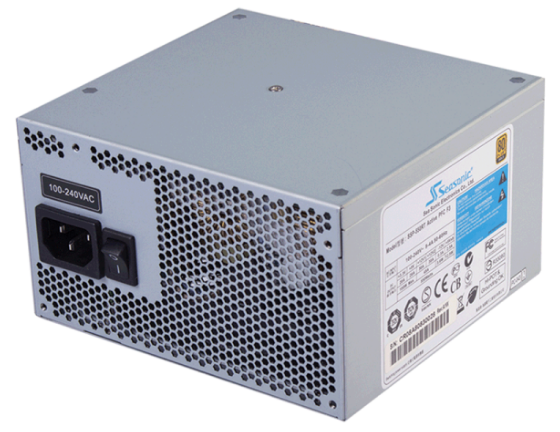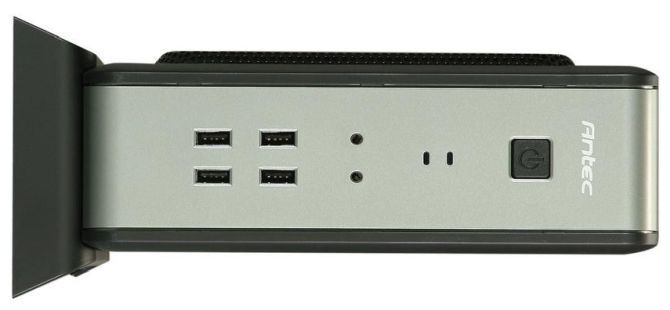You don't need a laptop to get an energy-efficient computer. In 2017, building a power-efficient PC requires knowing just three tips.
Three kinds of component and configuration options lead to a power-efficient build. In order of importance:
- A high-efficiency power supply.
- Components with low power consumption.
- Configuring your BIOS/UEFI to use less power.
Power Supply
Power supplies don't convert from wall AC current to DC without a great deal of loss in power. The average power supply converts at 70% efficiency, meaning 30% wasted energy. However, two kinds of power supplies convert at over 90% efficiency: PicoPSUs and 80+ Platinum (and the slightly better Titanium) rated power supplies. When choosing a build, either option presents a good choice. However, PicoPSUs cap out at around 200-watts. On the other hand, Platinum and Titanium rated PSUs cost a fortune – the cheapest Titanium PSU goes for about $140.
It's also important to note that power supply efficiencies vary depending on load. Most supplies provide their greatest efficiency at around 50% maximum load. Therefore, you should use a load calculator before choosing a power supply's wattage. Whatever your requirements are, our list of the best PSUs will help you discover what your options are.
Low-Power Components
Aside from the power supply, five other components can make a difference in the amount power consumed by your system: the CPU, RAM, storage drive, motherboard, and case. You can find lower power options for every one of those categories.
CPU: The most power-efficient motherboards come with CPUs that have been soldered to the board. Unfortunately, that means if either the board or the CPU goes bad, the entire unit must be discarded. Personally, I prefer using lower-power CPUs combined with small form factor mini-ITX motherboards.
RAM: RAM comes with a voltage rating that varies between 1.5 and 1.25 (or possibly even lower). Unfortunately, according to Tom's Hardware, that translates to around 1-watt at idle and 4-watts at maximum load. If you're looking to save power, you're better off throwing your money into a better power supply.
Storage drive: Solid State Drives (what's an SSD?) use substantially less power than regular hard disk drives. SSDs add amazing performance while consuming a tiny fraction of the wattage of a regular platter hard disk drive. The wattage savings depend on how much you write or read data. According to Quora, however, the power saved adds up.
Motherboard: The only motherboard (that I know of) designed specifically for low-power operation is MSI's ECO line. ECO motherboards can selectively disable unused components. With all the overhead trimmed out, an ECO board consumes around 40% the power of an ATX motherboard.
Case/Chassis/Heatsink: Overall, a case isn't going to save you much energy or provide efficiency gains. However, the fewer fans in your chassis, the less power consumed. Under full load, a standard 90mm fan can consume around 5-watts of power. Most PCs use around three fans. However, a few fanless cases exist, such as the HD-Plex H1.s and Akasa's Euler. Altogether, a completely fanless system might reduce power consumption by around 15-watts at load. Check our our roundup of the best PC cases to find a case that suits your needs. (Also, consider thermal paste to keep the processor cool.)
Graphics Processing Unit (optional): In case you're also thinking of getting a graphics card, look no further than NVidia. Dollar-per-dollar, the most efficient card is the Nvidia GeForce 1050Ti (or 1050).
BIOS/UEFI Settings
There are a number of settings located in the BIOS (and its next-generation replacement, UEFI) that aren't enabled by default that can have a noticeable impact on power consumption. Simply enabling the various power states on Intel boards (C1E and EIST) can reduce power consumption. You will want to enable them if they're available on your motherboard. Some BIOS/UEFIs use colloquial language to enable lower power states, such as "eco-mode" or "low power mode". Enable these, if available.
Desktop manufacturers tend to leave these settings off for performance purposes. Higher frequencies tend to generate snappier performance. However, most users won't notice the difference and you should definitely consider turning on your power-saving features.
Another BIOS/UEFI setting that can be turned on is EuP2013, which is the European standard for idle state power consumption. If enabled, the computer will use no more than half a watt of power while powered off. However, more modern implementations use almost no power when shut off.
Tom's Hardware published an excellent review of the various power-saving BIOS settings.
Undervolting and Underclocking
Don't confuse the two. Undervolting and underclocking save power in completely different ways. Undervolting reduces the amount of voltage delivered to the processor. If done properly, undervolting has no downside. Done incorrectly, it causes instability. Unfortunately, only expensive, high-end motherboards offer this feature.
Underclocking, on the other hand, doesn't improve your processor's efficiency. It only decreases its maximum frequency. In general, you are better off not underclocking, unless there is a good reason.
Build 1: $700-1000 Deluxe
In 2017, both AMD and Intel manufacture highly efficient, high-performance processors. In the 65-watt range, Intel offers the Core i7-6700 for $303, whereas AMD's Ryzen 7 1700 runs for $320. It's not clear which processor possesses the advantage in power consumption, though. However, Legit Reviews did a detailed analysis of Ryzen 7's power draw vs the Core i7-6700K and it appears that Ryzen comes out ahead. Also note that Intel's latest series of processor, Kaby Lake, produces almost the exact same performance as its older generation Skylake processors (Core i7-7700).
Because of the motherboard options available, though, the build presented here uses Intel (despite some serious thermal design flaws). Also note that Intel's T and S series CPUs use between 35 and 65 watts. On a higher end build, I would prefer getting a Core i7-6700T or a BGA board, but these are hard to find and aren't as performant as a slightly more power-hungry chip.
This particular build won't knock any socks off. In fact, it remains relatively mid-range in terms of gaming and CPU performance. Even so, it provides a highly efficient computing experience, with only a marginal markup. While you can make this build totally fanless, it's good to at least have some airflow, which in this is provided by the power supply's very slow moving fan. The case includes a couple of fans, which you don't really need.
The Nvidia 1050Ti is among the more efficient GPUs around, although efficiency is pretty much a continuum. Picking the most efficient gaming GPU depends on your needs.
- CPU: Intel Core i7-6700 -- $293 via Amazon;
- Hard Drive: OCZ Trion 150 240GB SSD -- $70 via Amazon;
- Motherboard: MSI ECO H110M LGA 1151 MicroATX -- $59 via Amazon;
- GPU: EVGA GeForce GTX 1060 6GB -- $235 via Amazon
- Power Supply: Rosewill 550W -- $90 via Amazon;
- RAM: Viper Elite Series 2 x 8GB -- $98 via Amazon;
- Heat Sink: NoFan CR-80EH -- $47.80 via Amazon
- Case: Xion microATX -- $23 via Amazon;
- Total: $915.80
Price accurate at time of writing.
Build 2: $400-699 Midrange
For lower-cost builds, Intel's 65-watt Core i5-6400 CPU offers solid, low-wattage performance. It doesn't offer Hyperthreading, but it does maximize energy efficiency. On the downside, I stuck in an 80+ Gold supply, rather than a Platinum-rated unit.
- CPU: Intel Core i5-6400 (65-watt) -- $176.90 via SuperBiiz;
- Hard Drive: OCZ Trion 150 240GB SSD -- $70 via Amazon;
- GPU: EVGA GeForce GTX 1050Ti Mini 4GB GDDR5 -- $132 via SuperBiiz;
- Power supply: Seasonic SSP-450RT 450-watt -- $60 via SuperBiiz;
- Motherboard: MSI ECO H110M LGA 1151 MicroATX -- $59 via Amazon;
- RAM: Ballistix Sport LT 8GB Kit (2x4GB) -- $59 via Amazon;
- Case: Xion MicroATX -- $23 via Amazon;
- Total: $579.90
Price accurate at time of writing.
Build 3: Below ~$200 Low End
On lower end machines, I once recommend AMD's APU technology. However, Intel's latest Celeron and Pentium processors outperform them in most ways -- for not much more. For example, the N3150 processor inside of the MSI ECO Mini-ITX motherboard draws 6-watts while also allowing users to shut off non-essential motherboard features for additional power savings.
For AMD-equipped examples, I put together three sample APU builds, in case you want other configuration options. However, Intel right now offers the best power efficiency for low end builds.
- CPU + Motherboard: MSI N3150I ECO mini-ITX -- $75 via Amazon;
- Hard Drive: ADATA SU800 128GB SSD -- $52.88 via OutletPC;
- RAM: Patriot Signature 4GB (1 x 4GB) SODIMM -- $23 via Amazon;
- Case + Power Supply: Antec ISK110 -- $48 via Fry's Electronics;
- Total: $198.88
Price accurate at time of writing.
Conclusion
Building your own highly efficient desktop computer doesn't take a lot of work or money — it just requires specialized parts, proper BIOS configuration, and a high-efficiency power supply. For a selection of fanless, high-efficiency PCs, check out FanlessTech's entry-level, mid-range and high-level rundown of builds. Or if you're looking for silent, fanless machines, drop by our run-down of prebuilt eco-friendly PCs.

